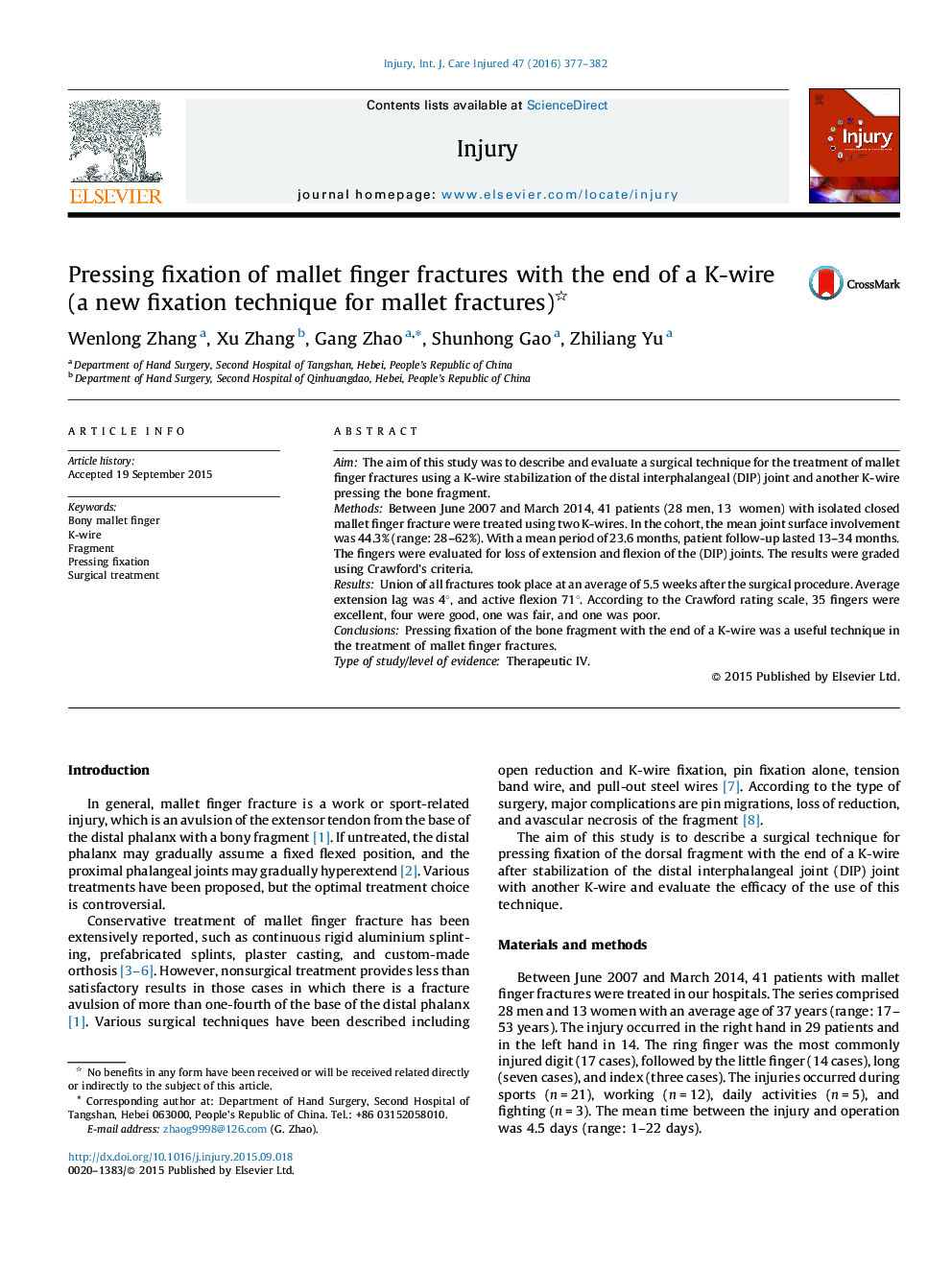| Article ID | Journal | Published Year | Pages | File Type |
|---|---|---|---|---|
| 3239008 | Injury | 2016 | 6 Pages |
AimThe aim of this study was to describe and evaluate a surgical technique for the treatment of mallet finger fractures using a K-wire stabilization of the distal interphalangeal (DIP) joint and another K-wire pressing the bone fragment.MethodsBetween June 2007 and March 2014, 41 patients (28 men, 13 women) with isolated closed mallet finger fracture were treated using two K-wires. In the cohort, the mean joint surface involvement was 44.3% (range: 28–62%). With a mean period of 23.6 months, patient follow-up lasted 13–34 months. The fingers were evaluated for loss of extension and flexion of the (DIP) joints. The results were graded using Crawford's criteria.ResultsUnion of all fractures took place at an average of 5.5 weeks after the surgical procedure. Average extension lag was 4°, and active flexion 71°. According to the Crawford rating scale, 35 fingers were excellent, four were good, one was fair, and one was poor.ConclusionsPressing fixation of the bone fragment with the end of a K-wire was a useful technique in the treatment of mallet finger fractures.Type of study/level of evidenceTherapeutic IV.
